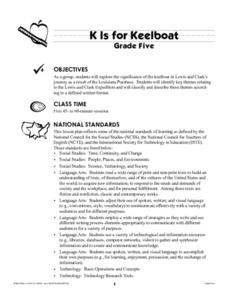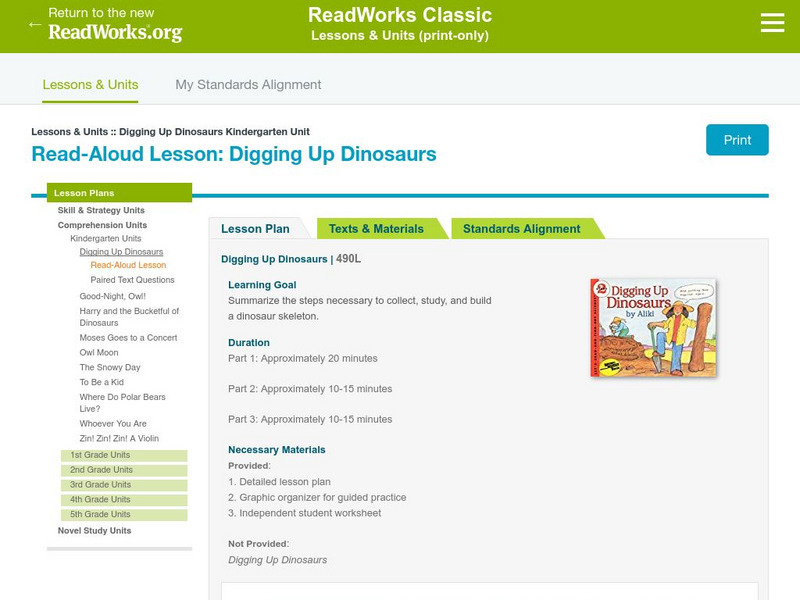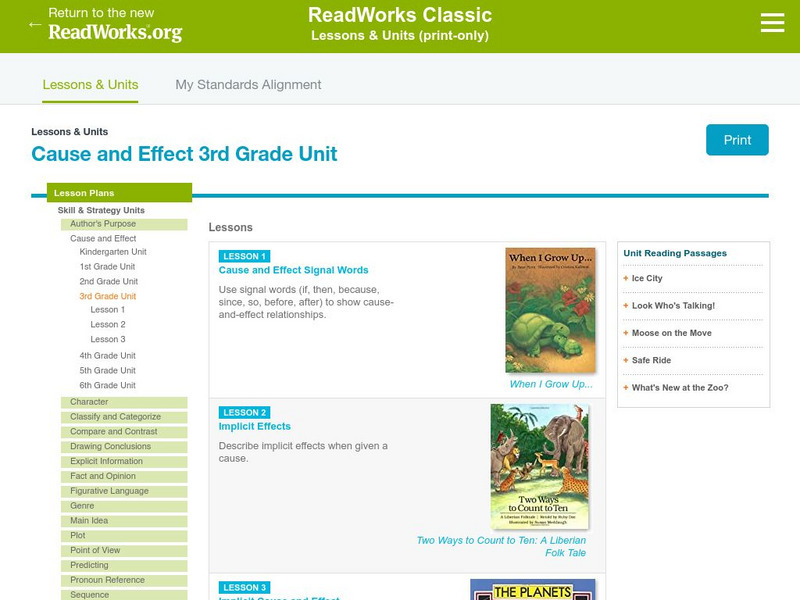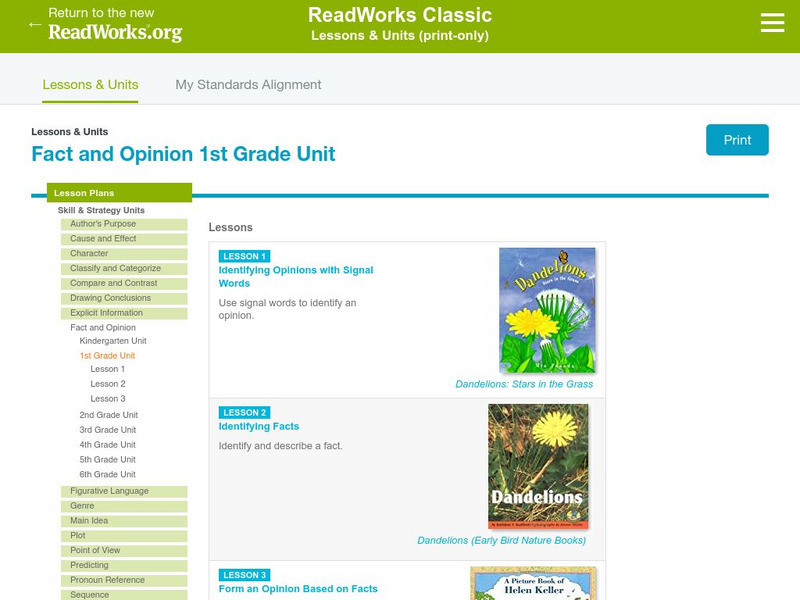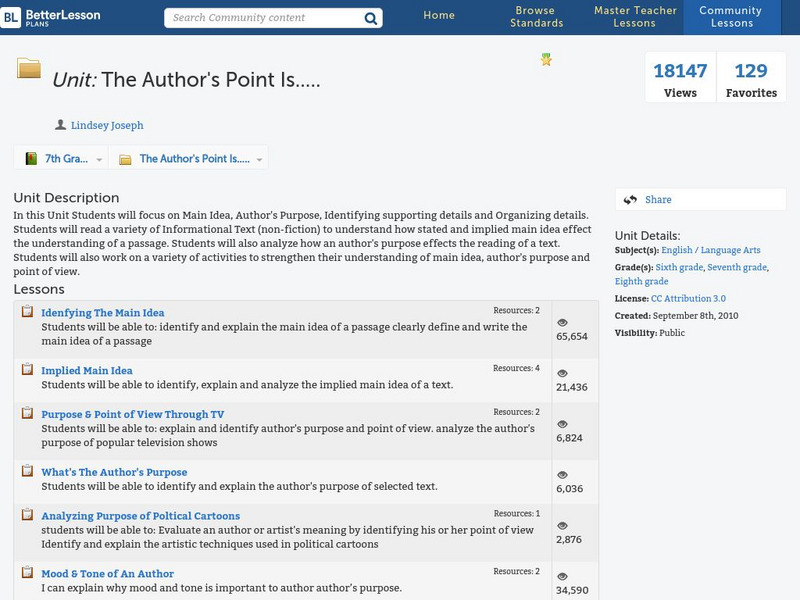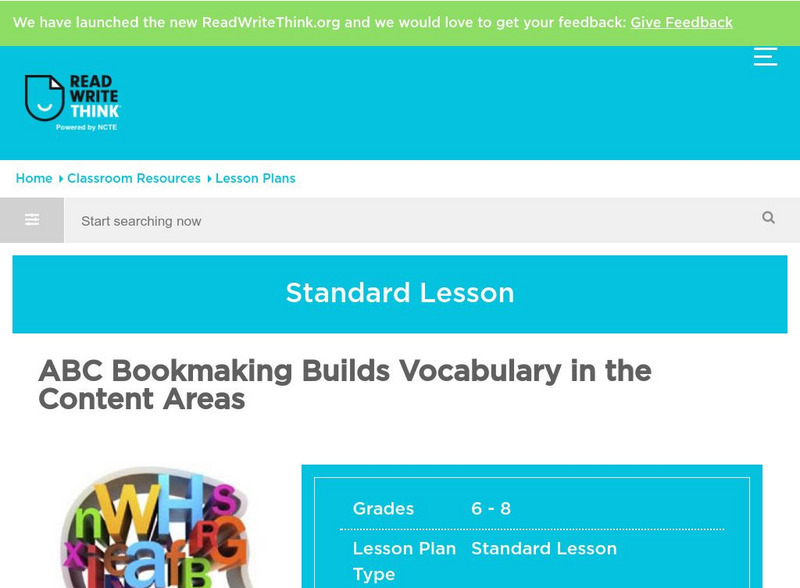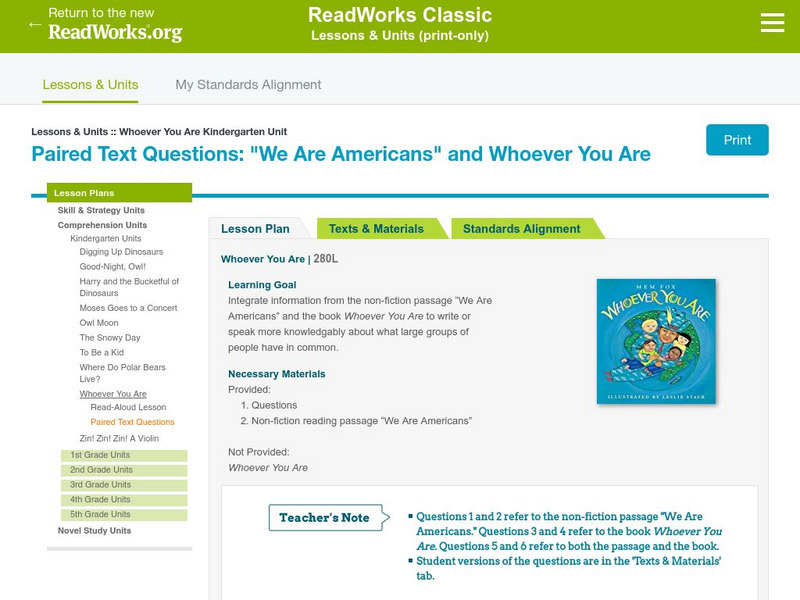Curated OER
Seeing Is Believing
Middle schoolers research and describe the stories of Thomas Jefferson, Meriwether Lewis and William Clark. They analyze historical sources from different points of view and present an analysis of two historical contexts.
Curated OER
K Is for Keelboat
Fifth graders investigate the significance of the keelboat in the Lewis and Clark expedition. They define the key themes of the expedition and classify them in prescribed format, an ABC book.
South Carolina Educational Television
Know It All: Non Fiction Text Features
Fifth graders will use non-fiction books to identify and explain how text features help them as individual readers.
Better Lesson
Better Lesson: Analyzing Text Complexity of Non Fiction Sources
This instructional activity will help students read and comprehend nonfiction, specifically biographies, through determining criteria for text complexity. Included is a PDF and Smart Notebook titled Determining Text Complexity, and an...
ReadWriteThink
Read Write Think: Diagram It! Identifying, Comparing & Writing About Non Fiction
Introduce your students to the different types of non-fiction such as biographies, biographies, and informative books. Students will use graphic organizers, peer interaction, and hands-on experiences to further understanding of this lesson.
Read Works
Read Works: Grade 2: Three Lesson Unit: Genre
[Free Registration/Login Required] A series of three lesson plans designed to teach students to compare and contrast fiction and non-fiction, identify the characteristics of non-fiction, and use guide words to locate topics in an...
Read Works
Read Works: Read Aloud Lesson: Digging Up Dinosaurs
[Free Registration/Login Required] Teachers will read "Digging Up Dinosaurs" using the close reading technique. Learners will use graphic organizers to summarize the steps necessary to collect, study, and build a dinosaur skeleton.
Read Works
Read Works: Explicit Information 3rd Grade Unit
[Free Registration/Login Required] A two-lesson unit in which students learn how to identify explicit information in non-fiction text by creating questions and then reading the text to find answers. Students also use explicit information...
Read Works
Read Works: Cause and Effect 3rd Grade Unit
[Free Registration/Login Required] A three-lesson unit on cause and effect. Students learn to use signal words to identify cause and effect relationships and to describe possible effects when given a cause in fiction. Students also learn...
Read Works
Read Works: Fact and Opinion 1st Grade Unit
[Free Registration/Login Required] A three-lesson unit on fact and opinion through which students learn how to identify opinions through signal words, identify facts in a non-fiction text, and use facts to help them formulate opinions of...
Read Works
Read Works: Fourth Grade: Three Lesson Unit: Compare and Contrast
[Free Registration/Login Required] A three-lesson unit on comparing and contrasting through which learners compare and contrast two non-fiction articles and two editorials, and write a compare and contrast essay. With free login, users...
ReadWriteThink
Read Write Think: Question and Answer Books From Genre Study to Report Writing
Contains plans for eight lessons that explore Question and Answer Books and ask students to do research in order to write their own. In addition to objectives and standards, these instructional plans contain links to sites used in the...
Better Lesson
Better Lesson: Unit: The Author's Point Is
Students will focus on Main Idea, Author's Purpose, Identifying supporting details and Organizing details. Students will read a variety of Informational Text (non-fiction) to understand how stated and implied main idea effect the...
CommonLit
Common Lit: Units: Teaching Units
Complete teaching units (12) by grade level. CommonLit units are crafted to be both engaging and rigorous, featuring a variety of literary and informational texts from diverse sources. Reading, writing, and discussion are prioritized in...
ReadWriteThink
Read Write Think: Abc Bookmaking Builds Vocabulary in the Content Areas
Six 50-minute lessons build vocabulary through the content areas by making an ABC book. It can become a classroom resource. Links include a non-fiction book list, checklist, word list, rubric, and a storyboard chart. There is also a link...
Read Works
Read Works: Paired Text Questions: "We Are Americans" and "Whoever You Are"
Students will compare information from the non-fiction book "We are Americans" and the book "Whoever You Are" to write or speak more knowledgeably about what large groups of people have in common.
Scholastic
Scholastic: Teaching With Nonfiction: Teach Text Features
A brief lesson plan, this site offers an example of non-fiction text and a graphic organizer to help orient young scholars to the features they need to use when reading for information.
Alabama Learning Exchange
Alex: Play the Dewey Decimal System Game
This lesson introduces the 10 main categories used in the Dewey Decimal Classification System for non-fiction bookshelf arrangement. A slideshow will be presented to students to help them learn details about the Dewey Decimal...

